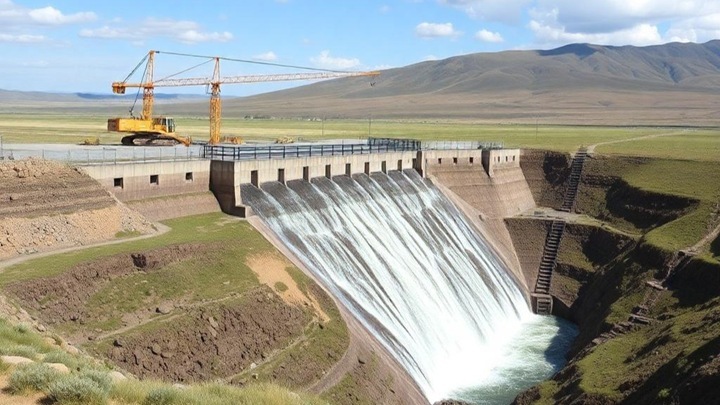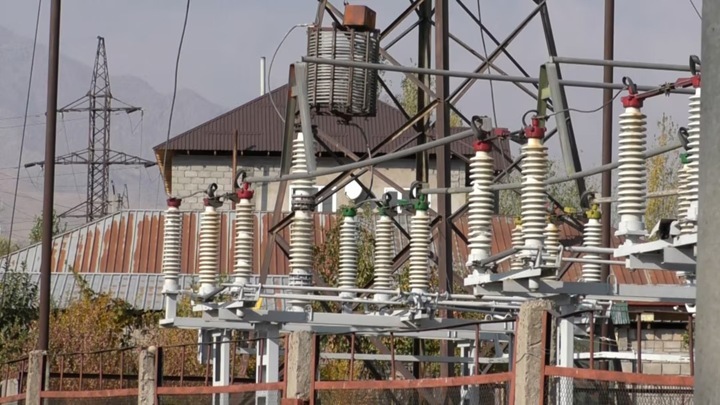Koksu River for oligarchs: for whom several dams are being built in the Zhetysu region
On a winter morning on the outskirts of the village of Rudnichny, in the Zhetysu region, noise is heard in the frosty silence. This is the Koksu River, which flows from the gorge of the same name. This river, even in winter, in the mezen, impresses with its power, what can we say about summer. And it is here, at Koksu, that it is planned to create a cascade of small hydroelectric power stations, and the construction of three of them has already begun. But it was not possible to build them without a scandal. Kazakhstan edition of Orda.kz tells why athletes, environmentalists and even archaeologists disagree with the construction of the HPP on Koksu, and where traces of oligarchs flicker in these projects:

But there are no hearings
Last week, during a briefing for journalists, Vice Minister of Energy of the Republic of Kazakhstan Sungat Yessimkhanov said that seven projects for the construction of hydroelectric power stations with a total capacity of 150 megawatts are planned to be implemented on the Koksu River in the Zhetysu region. They are being created as part of the development of renewable energy power plants in Kazakhstan.
In the video, Yessimkhanov also mentions the hydroelectric power station, around which a scandal broke out last year — local residents opposed its construction. He does not pronounce the name of this HPP, but we are actually talking about two power plants at once — Rudnichnaya HPP-1 and Rudnichnaya HPP-2 with a total capacity of 42 megawatts.
The Vice Minister said that the controversial issue in Rudnichny was resolved, and the residents were informed that the construction of the power plant would not create any problems. But the official rather wishful thinking. Including the journalist Orda.kz was personally convinced by visiting the Zhetysu region, where opponents of the construction of the hydroelectric power station met with representatives of the company building the station.
Perhaps one of the main opponents of the construction of a hydroelectric power station in Rudnichnoye can be called the Rafting Federation of Kazakhstan and its president Konstantin O. As he explains, Koksu is one of those mountain rivers of Kazakhstan that is best suited for rafting. And for both amateur and professional rafting. And it is that section of the river, near which a hydroelectric power station is already being built, that is especially valuable for rafters.
“Our Koksa River is known by athletes all over the world. And near the hydroelectric power station there is the famous “threshold propeller”, which is ideal for slalom passing. In 2023, the Asian Rafting Championship was held here. In 2024 there were international training camps and two national-scale competitions. This year we have planned the second and fourth stages of the Kazakhstan Cup here. Our Olympic rowing slalom team is training on Cox plate.”
Due to the construction of the HPP, part of Koksu will definitely be flooded – according to the plan it is 207 meters upstream. Aliy Karabalin, the project manager of the Mine HPPs, diligently calls it not a reservoir, but a hydroelectric power station. But in any case, the speed of the current in this place will change.
Plus, the rafters are sure, due to the fact that up to 40% of the water volume will go into the outlet channel of the hydroelectric power station, and downstream it will not be possible to fully engage in sports either. At least for 12 kilometers between two hydroelectric power plants. Aliy Karabalin replies that the volume of water necessary for the rafters will be discharged from the hydroelectric power station. And in the flooded area, according to him, they are even ready to build a pier. More precisely, they are not quite them, because Energobildservice LLP, which is building the power plant, is responsible only for the construction, and after the facility will go to the operator, whose name Karabalin could not name.
In general, according to Karabalin, they fulfilled all the necessary conditions: they passed an environmental assessment, agreed to cut down trees — mainly poplars. Whether they will compensate for the felling with money or planting new trees, at the rate of one to two, is still being decided.
But the builders did not hold the hearings about which the deputy minister spoke.
“We have a third-category facility, which, according to the legislation, allows not to hold public hearings, but only to notify local residents,” says Aliy Karabalin.
There are also questions about the category number. A representative of the Department of Ecology of the Zhetysu region, who was present at the meeting, explained that the stations received it only for the construction period. This caused confusion among the opponents of the HPP.
“It turns out that while it is being built, it will be of the third category. And when they build it, can the category change? How can this even be?” — Konstantin O. was indignant.
The athlete, who also spoke on behalf of environmentalists at the meeting, expressed bewilderment also about the fact that the environmental assessment assessed the damage that the HPP would cause directly where it would be located. And the potential harm upstream and downstream of the Koksu River was not assessed.
The builders of Mine Hydroelectric power stations do not have such a document as an archaeological examination. Representatives of Energobildservice explain this by the fact that in 2017, when they collected a package of documents, such an examination was not required. They were sure that there were no archaeological sites in this place. However, even a cursory inspection of the surroundings of the Rudnichnaya HPP-1 under construction by a researcher at the Institute of Archeology named after him. Margulana by Kairat Zhambulatov showed that there are at least four ancient burial grounds here.
“Now we will announce a tender to hire an organization that deals with archaeological expertise, and we will carry out this procedure,” Aliy Karabalin assured.
Opponents of the construction of a hydroelectric power station in Rudnichnoye fear that the power plant may not withstand mudslides that regularly descend on Coke. Aliy Karabalin replied that the hydroelectric power station under construction is capable of withstanding the passage of 180 cubic meters of water per second — according to him, this is the maximum volume of water that has been in Koksu since the mid-1950s.
The proposal to change the construction site of the HPP also failed to be discussed, the project was approved by the Ministry of Energy. And the deadlines, apparently, are tight. According to the plan, the Mine HPPs were supposed to be built by the end of 2024 — now they expect to launch them in 2026.
“If you are dissatisfied with something, you can go to court!” — Aliy Karabalin puts an end to the discussion.
And he also turned out to be unaware that not only two hydroelectric power stations in Rudnichnoye are going to be built on the Koksu River, but also several more power plants.
Lichen will devour everything
For example, the Verkhne-Talaptinskaya HPP located downstream has been under construction since 2022, and is scheduled to be completed in April 2025.
It is located near the village of Talapty. Concrete platinum has already been built here and it is generally clear that the degree of readiness is many times higher.
Verkhne-Talaptinskaya HPP is less powerful than the Mine ones: the maximum for which it is designed is seven megawatts. There are also claims to its construction.
“Due to the construction of the hydroelectric power station, the water temperature will change, this will already affect biodiversity. We have rare species of butterflies, and butterflies are always the first to disappear. Then the bees disappear, and upstream we have a lot of apiaries. There are also spruce, pheasants, bustards — the creation of a hydroelectric power station can also affect them,” Saltanat Uteshbayeva, the head of the Triton tourist club, expresses concerns.
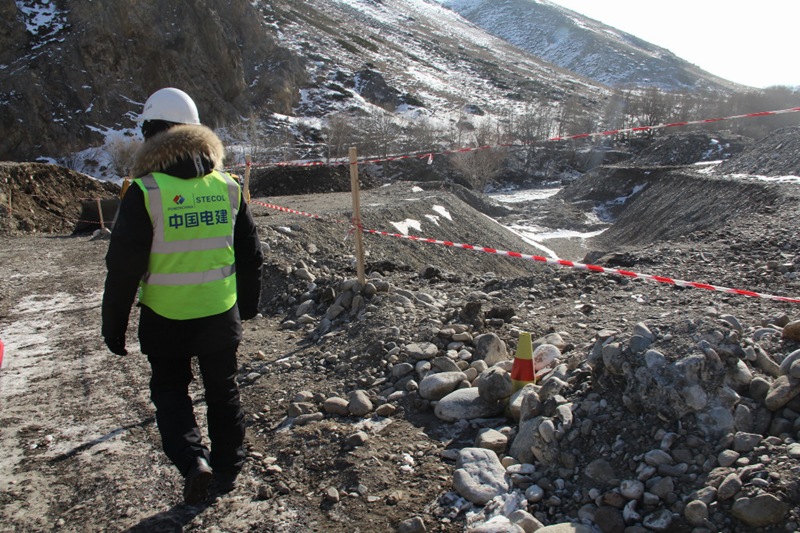
“Here is the Bartogai reservoir. When the Chilik River just flowed there, there were tugai forests and water meadows up to two kilometers long around it. Now there is a desert there — nothing grows at all!”, — adds Almaty teacher Elena Udartseva.
Unfortunately, a dialogue similar to the one near the Rudnichnaya HPP-1 did not work out at the Verkhne-Talaptinskaya power plant. A man named Yuri Kim came to talk to public figures and journalists. He introduced himself as a representative of the Koksuhydrostroy company.
According to Yuri Kim, this organization also held public hearings in 2022 and received all the necessary documents. The owners of the hydroelectric power station also ordered an archaeological examination, according to which 15 burial mounds, two burials, one mazar and eight rock carvings were found at the construction site of the station.
The information raised doubts. Firstly, it conducted an examination of Kazarchaeology LLP. It was their specialists who studied the Temir hill of the Kyzyltas ridge and gave the Temirbeton company a document stating that the petroglyphs there do not represent historical value. As a result, such a conclusion led to a months-long confrontation with the participation of builders, social activists and the authorities.
Secondly, even a cursory inspection of one of the hills in the vicinity of the hydroelectric power station showed that there could have been more than eight images there. For example, there was a rather large-scale scene on the slope, presumably of the Bronze Age.
In addition, according to Olga Gumirova, executive director of the Petroglyph Hunters Foundation, a change in the river regime and, as a result, humidity may lead to the disappearance of petroglyphs.:
“If the humidity rises, lichen can begin to grow actively on the stones, and it literally eats the patina from the stones, thanks to which the drawings are preserved. We are afraid that after the launch of the hydroelectric power station, archaeologists will not be able to access the rocks, which means they will not be able to conduct research. After all, the hydroelectric power station is a strategic facility, and outsiders are not allowed on it.”
Yuri Kim in response to this said that scientists, if they wish to go to the rocks, will be allowed to pass. But only on foot.
Coffee, Monaco and mineral resources
Representatives of both the Mining HPPs and the Verkhne-Talaptinskaya station assure that electricity will be supplied to a single KEGOC system, as required by law. But there is an opinion that the construction of power plants is the forerunner of the appearance of mining enterprises on the Koksu River. And these fears become even more justified if we study the founders of companies associated with hydroelectric power plants.
Let’s start with the Mining HPPs. The builder of these stations is Energobildservice LLP. This is the “daughter” of the private company EnergyBridge Ltd., on whose website it is said that the Mine HPPs are one of their projects. EnergyBridge Ltd. has two natural persons and one legal entity as founders. The physical ones are:
- Kairat Orazbekov is a millionaire, the owner of the “Elite Construction” LLP and the futsal “Kairat”, and since 2012 the honorary Consul of Kazakhstan in Monaco.
- Alain Baigazin.
A legal entity is a PowerBridge company, whose founders include the same Baigazin, and KazMinerals holding.
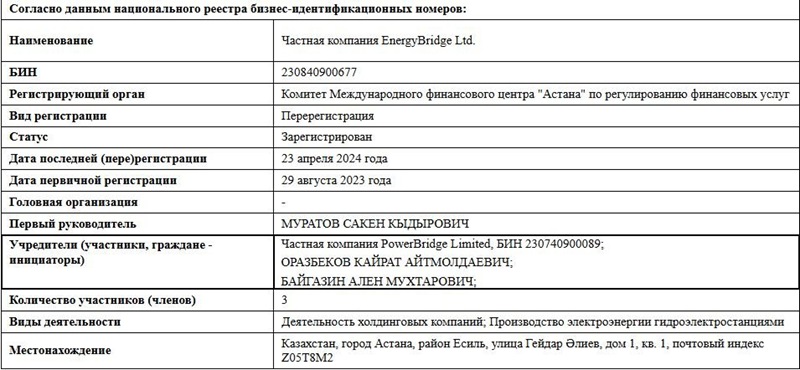

According to Forbes.kz Although KazMinerals is legally a Dubai company, but its president is Kazakh billionaire Vladimir Kim.
However, Aliy Karabalin did not hide the fact that KazMinerals is building mine hydroelectric power plants. According to him, they simply won the auction by offering a minimum tariff. They are built by the hands of the general contractor, Stecol Corporation, the “daughter” of the national Chinese construction company Chinapower. At the construction of mine hydroelectric power stations, some of the personnel are Chinese citizens. According to Karabalin, this is a condition of the general contractor.
With Verkhne-Talaptinskaya HPP, everything is less obvious. The right to its construction was won by a certain LLP “Bekzat”, which is still listed on the Baiterek holding website as its “daughter”. But open sources report that Bekzat LLP no longer exists. And its legal successor is Verkhne—Talaptinskaya HPP LLP, which has five founders.
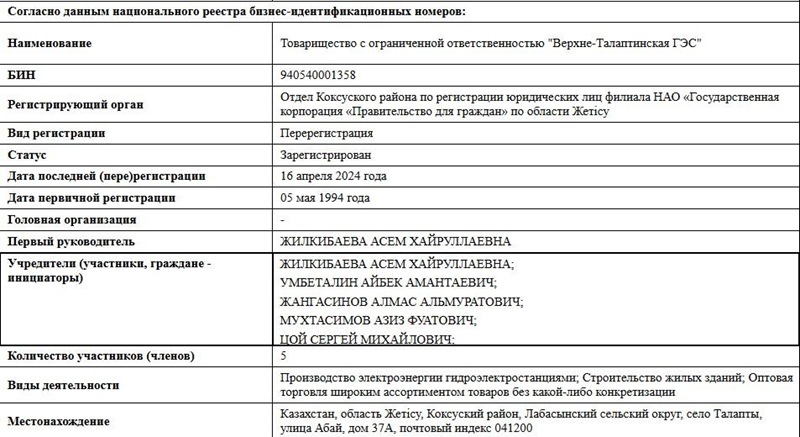
These are entrepreneurs with diversified businesses. Each has from six to 11 legal entities. For example, among them there is even the owner of the Drinkit coffee franchise, Aibek Umbetalin.
The first head and one of the founders of Verkhne-Talaptinskaya HPP LLP, Asem Zhilkibaeva, is related to 11 legal entities. Among other legal entities, Shymkent branches of two insurance companies with the name “Eurasia”.
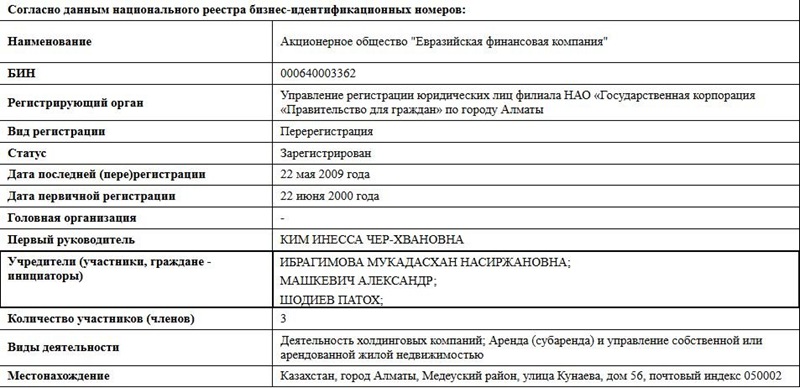
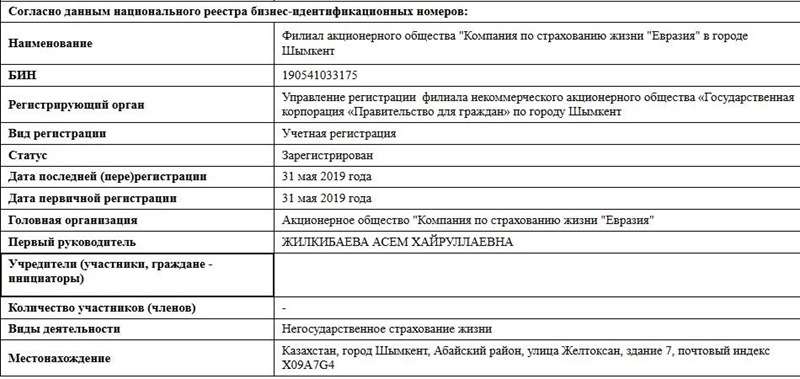
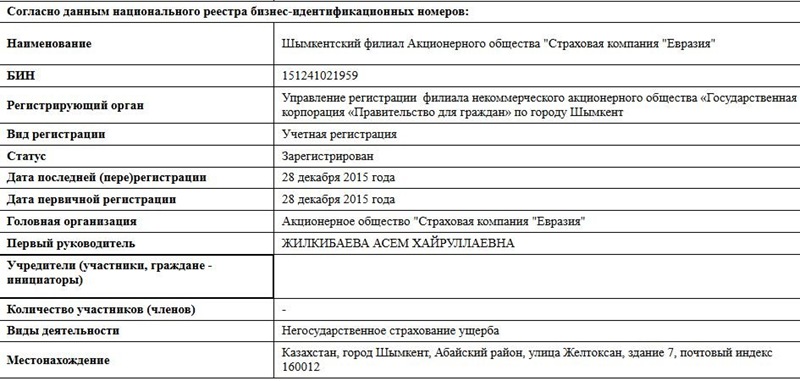
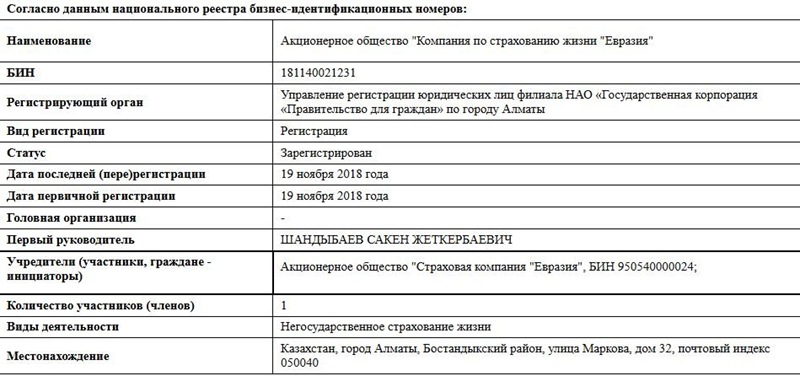
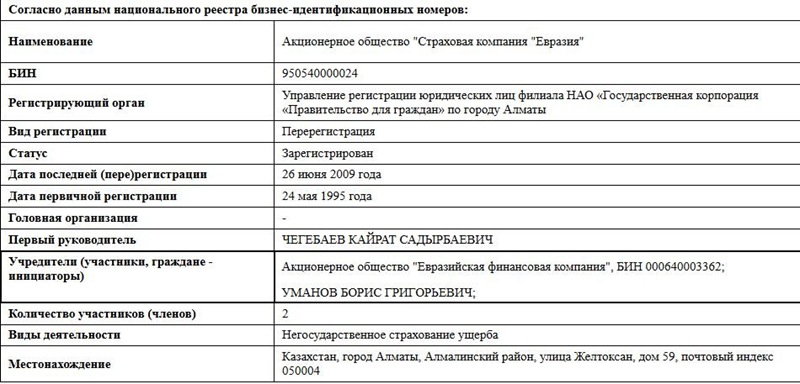
Their parent company is the Eurasian Financial Group, which is part of the Mashkevich—Shodiev Empire and is directly owned by Alexander Mashkevich, Patokh Shodiev and Mukadaskhan Ibragimova.
Until 2024, Mashkevich and Shodiev Sr. were members of the board of directors of ERG, one of the largest mining companies operating in Kazakhstan. At the end of last year, Patokh Shodiev was replaced there by his son — Mashkevich, presumably a distant relative, and the son of Mukadaskhan Ibragimova headed the ERG.
So, albeit indirectly, another large mining corporation appeared in the history of the construction of the HPP on Koksu.
From other points that you can also pay attention to:
- Four of the five founders of Verkhne-Talaptinskaya HPP, except for the same Asem Zhilkibayeva, are listed as founders of the Zhetysu Pipe plant established in 2023.
- Almas Zhangasinov is the founder of Ast concrete group LLP, engaged in the production of ready—mixed concrete.
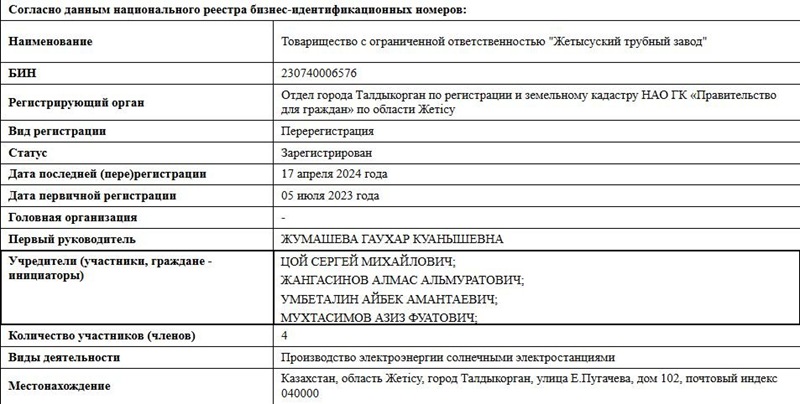
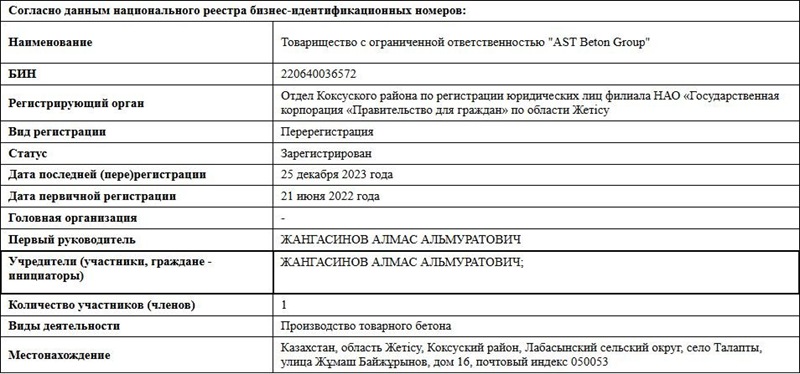
And this group of people can also be called specialists in hydroelectric power plants. Because, in addition to Verkhne-Talaptinskaya HPP, they are indicated by the founders of LLP with the names: Eskeldinskaya HPP and Talaptinskaya HPP, and Almas Zhangasinov and Sergey Tsoi are also LLP Borohudzir HPP. Very energetic businessmen.
Igor Ulitin (Orda.kz )

